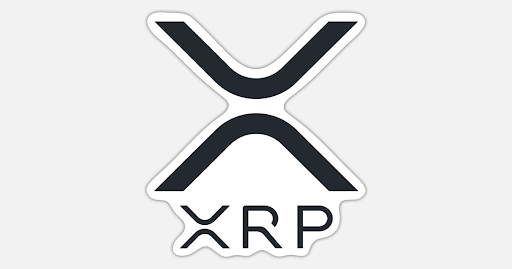Cryptocurrency trading has stayed strong since it gained massive popularity in recent years, offering both seasoned investors and beginners a chance to profit from the market.
Still, many people are trying to figure out where to begin, overwhelmed by complicated details, or worried about the potential risks involved. The uncertainty surrounding crypto trading can definitely feel intimidating and confusing for newcomers.
Common concerns include the legitimacy of cryptocurrencies for trading, the fear of market volatility, and the struggle to find trustworthy information.
In this article, we will explore the world of cryptocurrency trading and provide you with the best currencies.
We’ll also provide practical advice on selling off these currencies for immediate cash on reputable exchange platforms so you’ll have a firm grasp of the basics, know where to find reliable resources, and feel more confident in trading cryptocurrencies.
Top 11 Most Profitable Cryptocurrencies to Trade
Choosing which cryptocurrencies to trade can be overwhelming, especially with many available options, but here are the top popular ones with the most profits
1. Bitcoin (BTC)
As the first and most well-known cryptocurrency, Bitcoin dominates the market. It’s often seen as the digital gold of cryptocurrencies, with the highest liquidity and comprehensive adoption. BTC is a strong option for both long-term investors and active traders.

- Benefits: High liquidity, mainstream adoption
- Trends: Often leads market movements
- Potential: Reliable for long-term investment
2. Ethereum (ETH)
Ethereum is the second-largest cryptocurrency and the leading platform for decentralized applications (dApps) and smart contracts. Its massive ecosystem makes it highly versatile for use cases beyond transactions.

- Benefits: Popular in DeFi, NFTs, and dApps
- Trends: Ethereum 2.0 is expected to improve scalability and reduce transaction costs
- Potential: High future growth with decentralized applications
3. Litecoin (LTC)
Known as the “silver to Bitcoin’s gold,” Litecoin offers faster transaction times and lower fees than Bitcoin, making it a preferred option for smaller, everyday transactions.

- Benefits: Lower fees, faster transaction speeds
- Trends: Popular for micro-transactions and day-to-day use
- Potential: Strong scalability for frequent transactions
4. TRON (TRX)
TRON is focused on decentralizing the entertainment industry, allowing content creators to share their work without traditional intermediaries. It’s a favorite among developers working on decentralized applications.

- Benefits: Strong in gaming and content-sharing applications
- Trends: Partnerships with entertainment platforms
- Potential: Long-term growth in decentralized entertainment
5. Tether (USDT)
Tether is a stablecoin pegged to the US dollar. It offers a stable alternative to volatile cryptocurrencies, making it ideal for traders looking to park funds during market downturns.

- Benefits: Stability in volatile markets
- Trends: Widely used for day trading and as a safe haven during market dips
- Potential: Best for preserving value in uncertain times
6. Binance Coin (BNB)
Binance Coin powers the Binance exchange, offering users discounted fees and access to the Binance Smart Chain. It’s one of the most widely used coins on one of the largest crypto exchanges.

- Benefits: Discounted trading fees, broad use within the Binance ecosystem
- Trends: Expanding into DeFi and NFT sectors
- Potential: Significant growth tied to Binance’s success
7. Solana (SOL)
Solana is known for its breakneck transaction speeds and low costs, making it a favorite for decentralized applications. It’s considered one of the best competitors to Ethereum.

- Benefits: High scalability, low fees
- Trends: Rapidly expanding ecosystem of DeFi and NFT platforms
- Potential: High growth with increasing developer adoption
8. USD Coin (USDC)
Similar to Tether, USDC is a stablecoin pegged to the US dollar. It offers transparency and security for traders and is commonly used in decentralized finance (DeFi) for lending and liquidity pools.

- Benefits: Transparent, stable store of value
- Trends: Increasing adoption of DeFi platforms
- Potential: Reliable for long-term stability
9. XRP (Ripple)
Ripple (XRP) is designed for fast, low-cost international payments, making it highly appealing for financial institutions. Despite some regulatory challenges, XRP remains strong in the global payment sector.

- Benefits: Fast and cheap cross-border payments
- Trends: Gaining traction in global finance despite regulatory issues
- Potential: High potential in financial applications if regulatory hurdles are overcome
10. Dogecoin (DOGE)
Initially created as a joke, Dogecoin has grown in popularity due to its community and support from high-profile figures like Elon Musk. It’s a speculative investment, often used for short-term trading.

- Benefits: Low transaction costs, highly liquid
- Trends: Strong community-driven growth
- Potential: High-risk, high-reward based on social media trends
11. Toncoin (TON)
Toncoin offers scalable blockchain solutions focused on fast and efficient transactions. Its ecosystem is growing, with increasing partnerships and use cases.

- Benefits: Highly scalable blockchain
- Trends: Increasing adoption of decentralized networks
- Potential: Strong future with scalable blockchain solutions
Pros and Cons of Cryptocurrency Trading
Cryptocurrency trading has become an attractive option for many investors, but before investing, it is essential to weigh the advantages against the risks.
Pros of Cryptocurrency Trading
1. Decentralization Benefits
One of cryptocurrencies’ core advantages is that they are decentralized, meaning no central authority (like a bank) controls them. This can lead to greater financial independence and transparency in transactions.
2. Security Advantages
Cryptocurrencies often use blockchain technology, which offers enhanced security compared to traditional payment systems. The distributed nature of blockchain makes it difficult for hackers to manipulate transactions, providing an extra layer of protection.
3. High Return Potential
Cryptocurrencies are known for their volatility, which means prices can rise quickly, leading to substantial profits. For example, early investors in Bitcoin and Ethereum have seen significant returns, and many cryptocurrencies offer high growth potential.
4. Diversification
Adding cryptocurrencies to your investment portfolio can offer diversification, helping to spread risk across different assets. Cryptocurrencies often behave independently from traditional markets, providing balance during economic uncertainty.
5. Innovation in Smart Contracts and DeFi
Ethereum and other platforms enable smart contracts, which allow the automatic execution of agreements without intermediaries. Decentralized finance (DeFi) is also increasing, opening new ways to borrow, lend, and trade assets without traditional banks.
Cons of Cryptocurrency Trading
1. Volatility Risks
While high volatility can lead to substantial gains, it also poses a significant risk. Prices can plummet as quickly as they rise, resulting in severe losses for those unprepared for market swings.
2. Regulatory Uncertainty
Cryptocurrencies operate in a relatively unregulated space. Governments worldwide are still developing laws for the cryptocurrency market, which could affect future prices, access, and usage. Traders should stay informed about changing regulations.
3. Security Risks
While blockchain technology is secure, cryptocurrency exchanges and wallets can be vulnerable to hacking. Sometimes, investors lose their funds due to exchange breaches, so securing assets in cold wallets (offline) is recommended.
4. Market Manipulation
Cryptocurrency markets are not immune to manipulation. Due to the relatively small size of specific markets, large players can sometimes influence prices through pump-and-dump schemes or other tactics, affecting small investors.
5. Potential Scams and Frauds
Cryptocurrencies’ anonymity and decentralized nature make them attractive for scams and fraudulent schemes. Investors should be cautious when participating in initial coin offerings (ICOs) or trading on unregulated platforms.
How to Trade Cryptocurrency Easily
There are many crypto trading platforms, but trading cryptocurrency on SnappyExchange is designed to be simple and secure. This guide will walk you through the key steps to ensure your transactions go smoothly.
1. Register/Login on SnappyExchange
The first step to trading cryptocurrency on SnappyExchange is creating a new account or logging in to your existing one. If you’re new to the platform, registration is quick and straightforward.
Simply visit the SnappyExchange website, click the Register button, and enter your email, phone number, and password. Logging in takes just a few clicks if you’re already a user. Once logged in, you’ll have access to your dashboard, where you can start trading instantly.
2. Click ‘Trade E-Currency’
After logging in, navigate to the Trade E-Currency option, which is located in your dashboard. This section is where you initiate the process of buying or selling cryptocurrency.
3. Pick Currency & Fill Info
Next, you’ll select the specific cryptocurrency you want to trade, such as Bitcoin, Ethereum, or another option. After selecting your currency, you’ll be prompted to enter some basic details about your transaction. This includes the amount of cryptocurrency you want to sell.
Double-check the information you provide to avoid any errors during the transaction process. SnappyExchange makes it easy to configure your trade details with clear and concise input fields.
4. Click ‘Sell Now’
Once you’ve entered all the necessary information and reviewed the details of your trade, it’s time to execute the transaction by clicking the Sell Now button. This step confirms your transaction and moves it to the next phase, where the platform will process it.
5. Transfer Currency & Upload Payment Screenshot
After confirming the trade, you must transfer the selected cryptocurrency to the wallet address provided by SnappyExchange. Once the transfer is complete, you must also upload a screenshot as proof of payment.
This is an essential step in the process, allowing the platform to verify the transaction. SnappyExchange’s platform ensures that uploading and confirming payments is simple and efficient, with easy-to-follow prompts guiding you through the process.
6. Wait for Processing & Get Credited
Once you’ve uploaded your payment screenshot, the transaction begins processing. This usually takes a short amount of time. You can monitor your trade status directly from your dashboard, where you will receive updates on the transaction’s progress.
Once everything is confirmed, the funds will be credited to your account, and you’ll be notified when your Naira balance is updated. SnappyExchange prides itself on quick processing times, so you can expect your funds to be available shortly after completing the transaction.
Tips to Trade Cryptocurrency Successfully
Trading cryptocurrency can be highly rewarding but risky without the right strategies. To maximize your success and minimize potential losses.
Here are some actionable tips to help you trade cryptocurrency more effectively.
1. Research and Analyze Market Trends
Staying updated about market trends is one of the most crucial aspects of cryptocurrency trading. Regular research allows you to anticipate potential price movements and adapt your strategy accordingly. Reliable sources like crypto news platforms, market analysis blogs, and social media channels provide valuable insights into market shifts.
2. Set Price Alerts and Notifications
Cryptocurrency markets are volatile, with prices often changing rapidly. Setting price alerts can help you stay updated on critical price movements and act at the right time. Many crypto exchanges and trading apps allow you to put these notifications to ensure you don’t miss key trading opportunities.
3. Diversify Your Portfolio
Diversifying your investments across multiple cryptocurrencies helps to spread risk and protect your portfolio from the volatility of a single asset. Investing in different types of cryptocurrencies, such as stablecoins, utility tokens, and speculative coins, reduces the chance of significant losses if one asset underperforms.
4. Use Technical Indicators
Technical analysis tools like moving averages, Relative Strength Index (RSI), and candlestick charts can provide data-driven insights into market behavior. These indicators help you predict price trends and make informed trading decisions based on historical performance rather than guesswork.
5. Manage Emotions and Risk
One of the biggest challenges in trading is controlling your emotions. Fear and greed can lead to impulsive decisions like panic selling or overtrading. It’s essential to have a clear trading plan, stick to it, and use risk management strategies like setting stop-loss limits to minimize potential losses.
FAQs
1. Which cryptocurrency is mostly traded?
Bitcoin (BTC) and Ethereum (ETH) are the most traded cryptocurrencies globally. These two dominate the market due to their large user base, high liquidity, and established market presence. Bitcoin is seen as a store of value, while Ethereum powers decentralized applications and smart contracts.
2. Which coin is more profitable to trade?
Profitability depends on market conditions and trading strategies, but Bitcoin (BTC) is often considered a profitable option due to its high trading volume and volatility. Other coins like Ethereum (ETH) and Binance Coin (BNB) can also provide significant returns, especially for those looking to diversify.
3. What is the best exchange for trading cryptocurrencies?
There are many reliable exchanges, but SnappyExchange is highly recommended for its security, ease of use, and quick transaction processing.
4. How do I secure my cryptocurrency holdings?
To protect your cryptocurrency investments, it’s important to use secure wallets (preferably hardware wallets like Ledger or Trezor), enable two-factor authentication (2FA), and avoid storing large amounts of crypto on exchanges. Also, regularly update your passwords and ensure you’re using reputable exchanges.
5. What are the risks associated with cryptocurrency trading?
Cryptocurrency trading involves market volatility, hacking, regulatory uncertainty, and liquidity risks.
Read Also: Types of Crypto Brokers
Conclusion
Trading cryptocurrencies can be highly rewarding with the right strategies and knowledge.
Bitcoin (BTC) and Ethereum (ETH) lead the pack, but don’t overlook rising stars like Solana (SOL) and Binance Coin (BNB). Each cryptocurrency brings its own set of opportunities and risks to the table.
Diversifying your portfolio, staying updated on market trends, and utilizing secure platforms like SnappyExchange can help you boost your returns while minimizing risks.
Grasping the advantages and disadvantages of various cryptocurrencies and implementing solid risk management strategies is essential for thriving in the unpredictable realm of crypto trading.
As the market changes, it is essential to stay updated on trends and continually fine-tune your trading strategy to ensure long-term success.
Whether you’re an experienced trader or a newcomer, picking the right cryptocurrencies to trade is crucial. Focusing on their growth potential and liquidity will help you create a solid trading strategy that can handle the market’s ups and downs.

